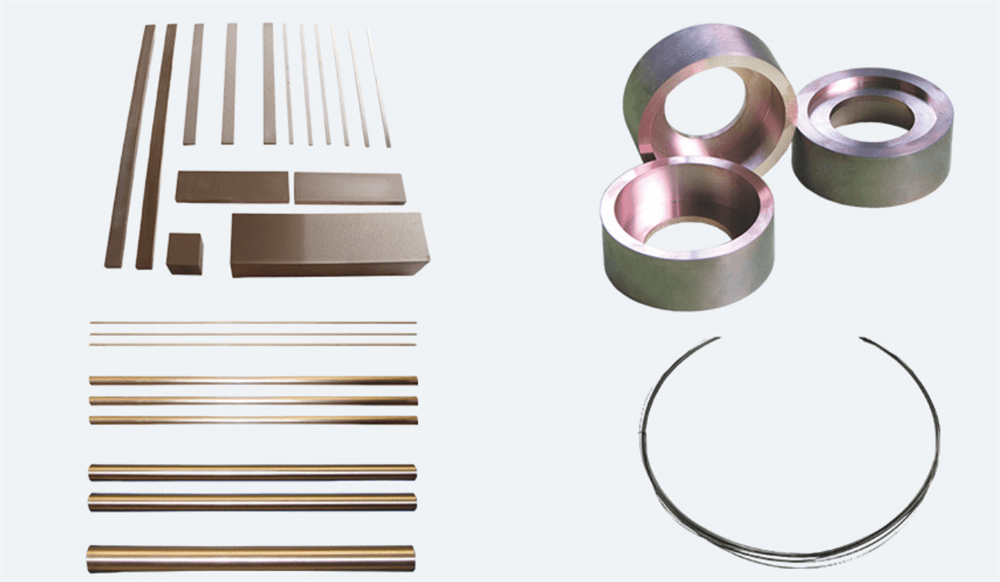
W-Cu Alloy
Therefore, tungsten copper alloy has the characteristics of high strength, high density, high temperature resistance, arc erosion resistance, good conductivity and electric heating performance, good processing performance, good arc breaking performance, good conductivity, good thermal conductivity, small thermal expansion, and sweating cooling.
1、Typical properties of tungsten copper composite materials
| Grade | Chemical composition(wt%) | Density | Hardness | Coefficient of thermal expansion | Thermal conductivity | Electrical resistivity | Conductivity | Bending strength | ||
| Cu | Total impurities | W | g·cm-3 | HB | 15~800℃ | W(m·K)-1 | μΩ·cm | %IACS | MPa | |
| W50Cu50 | 50±2.0 | ≤0.5 | balance | ≥11.85 | ≥100 | ≤13.3 | ≥290 | ≤3.2 | ≥54 | -- |
| W55Cu45 | 45±2.0 | ≤0.5 | balance | ≥12.30 | ≥110 | ≤12.4 | ≥270 | ≤3.5 | ≥49 | -- |
| W60Cu40 | 40±2.0 | ≤0.5 | balance | ≥12.75 | ≥130 | ≤11.6 | ≥250 | ≤3.7 | ≥47 | -- |
| W65Cu35 | 35±2.0 | ≤0.5 | balance | ≥13.30 | ≥140 | ≤10.4 | ≥230 | ≤3.9 | ≥44 | -- |
| W70Cu30 | 30±2.0 | ≤0.5 | balance | ≥13.80 | ≥160 | ≤9.4 | ≥220 | ≤4.1 | ≥42 | ≥790 |
| W75Cu25 | 25±2.0 | ≤0.5 | balance | ≥14.50 | ≥180 | ≤8.4 | ≥200 | ≤4.5 | ≥38 | ≥885 |
| W80Cu20 | 20±2.0 | ≤0.5 | balance | ≥15.15 | ≥197 | ≤7.7 | ≥180 | ≤5.0 | ≥34 | ≥980 |
| W85Cu15 | 15±2.0 | ≤0.5 | balance | ≥15.90 | ≥240 | ≤7.2 | ≥170 | ≤5.7 | ≥30 | ≥1080 |
| W90Cu10 | 10±2.0 | ≤0.5 | balance | ≥16.75 | ≥260 | ≤6.7 | ≥160 | ≤6.5 | ≥27 | ≥1160 |
| W93Cu7 | 6月9日 | ≤0.5 | balance | ≥17.00 | ≥280 | ≤6.4 | ≥140 | ≤6.5 | ≥27 | -- |

2、Technology

3、Application
Tungsten copper material combines the low thermal expansion rate of tungsten with the high thermal conductivity of copper, which can effectively release
the heat of electronic devices and help cool various products such as IGBT modules, RF power amplifiers, LED chips, etc. It can be used in large-scale
integrated circuits and high-power microwave devices as insulation metal substrates, thermal control boards, heat dissipation components (heat sink materials),
and lead frames.
(1)Electronic device heat dissipation devices.
(2)High performance lead frame.
(3)The thermal control panel and radiator of the thermal control device.
(4)High power devices such as microwave, laser, radio frequency, and optical communication.
.jpg)
.jpg)
.jpg)